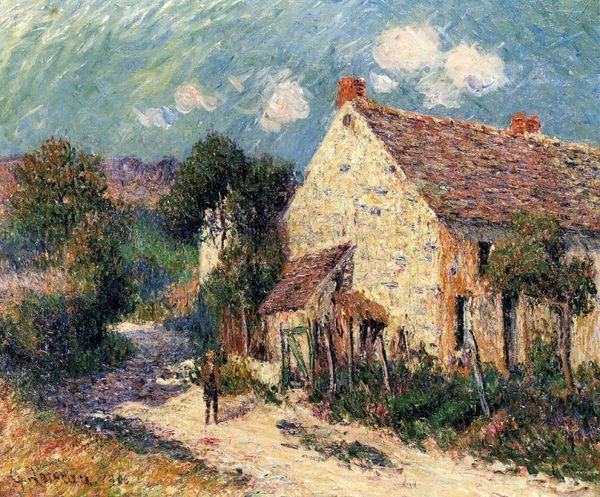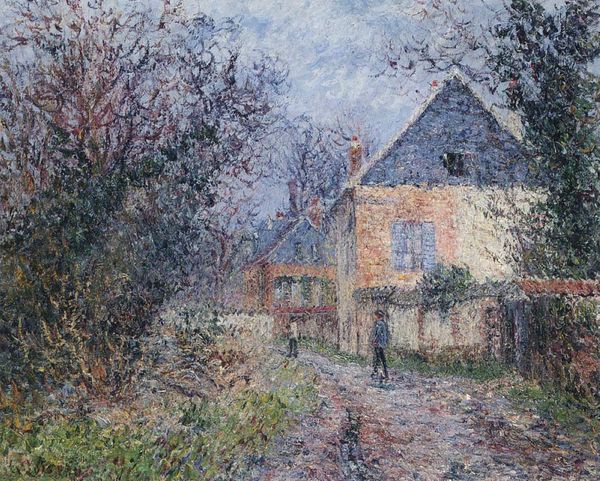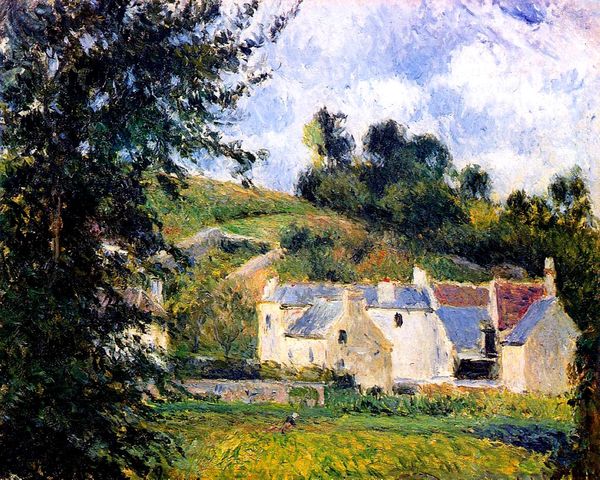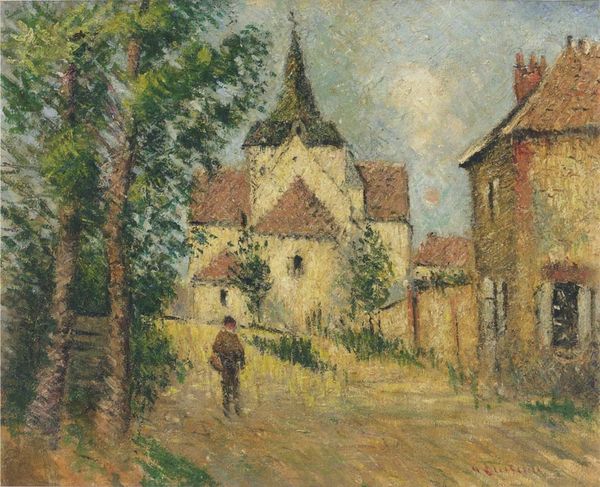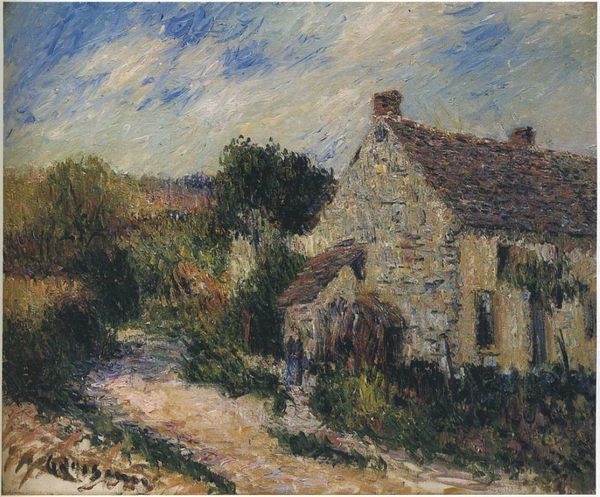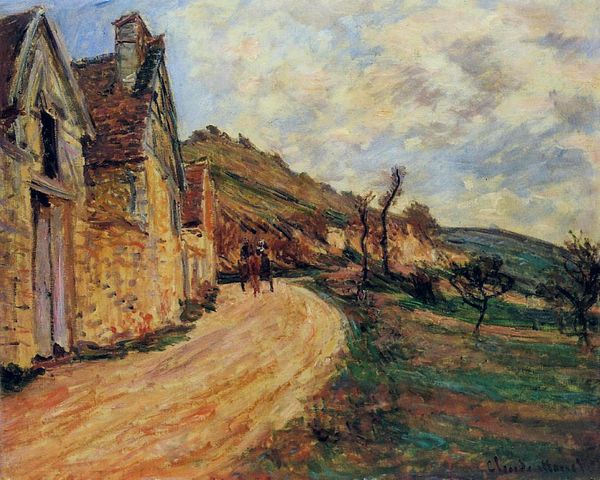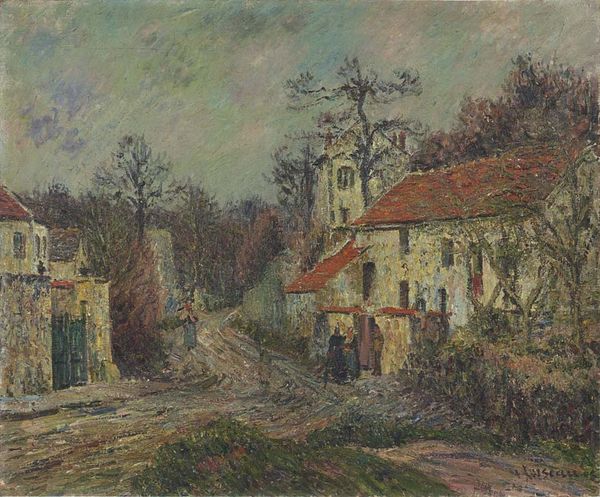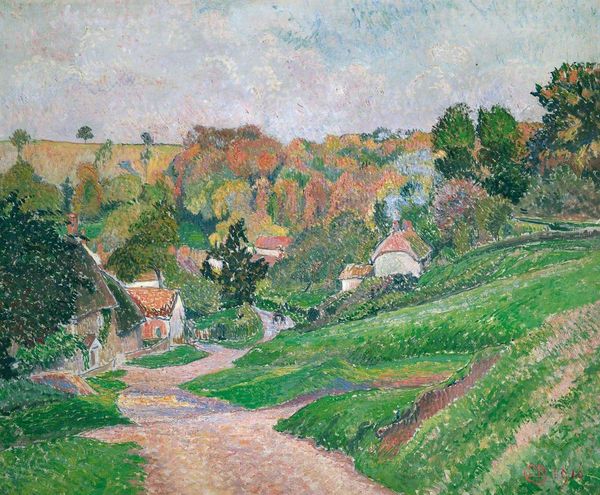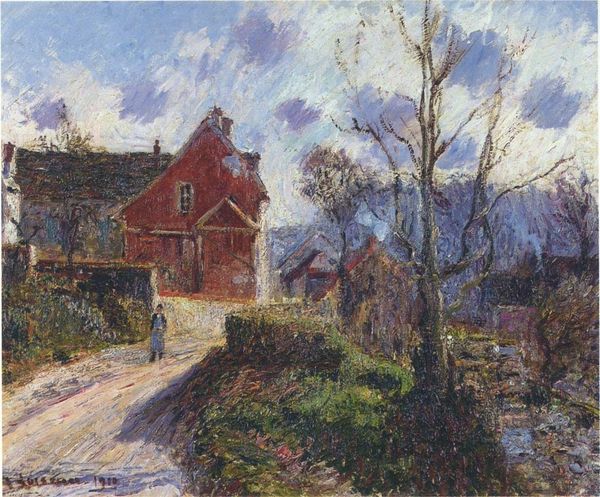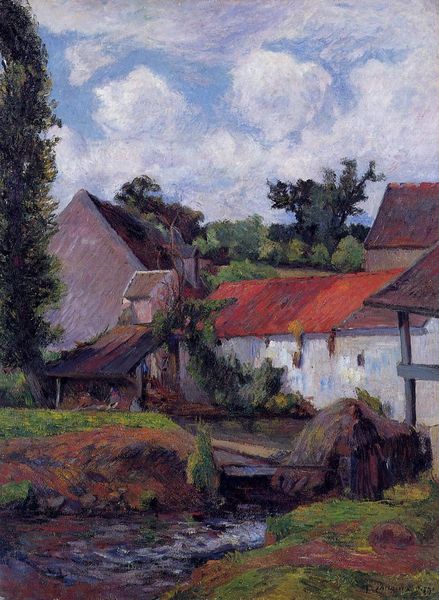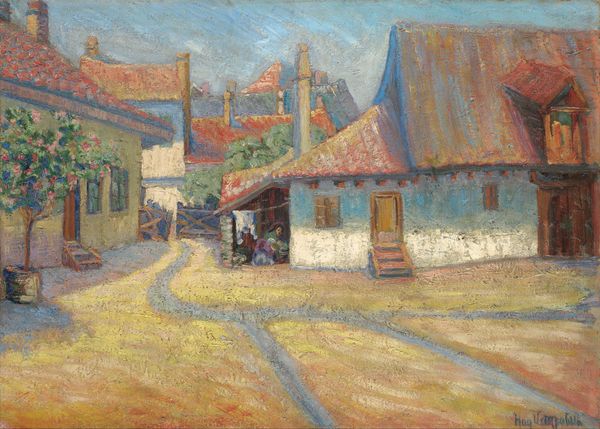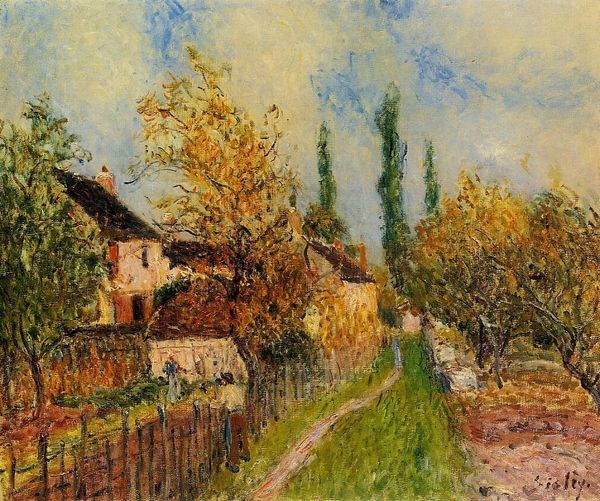
Copyright: Public domain
Editor: This is Camille Pissarro’s "Cottages at Auvers, near Pontoise" from 1879, made with oil paint. I find the textures fascinating – the way he builds up the thatched roofs and the road using visible brushstrokes. What stands out to you when you look at it? Curator: Well, for me, Pissarro’s landscapes are interesting because they document a critical shift. We see the transition from rural life to the burgeoning urbanization of France in the late 19th century. Pissarro wasn’t just painting pretty scenes. He was capturing a society on the cusp of radical change, wasn't he? Editor: Absolutely! The houses, while charming, almost feel like they're about to be overtaken by something… new. Did Pissarro consciously intend to comment on that societal shift? Curator: Intent is always tricky to pin down. However, as Impressionism gained traction, art became less about glorifying established power and more about depicting everyday life. Pissarro, in choosing these "ordinary" subjects, elevated them and, by extension, the lives of those who inhabited these spaces. It was a subtle, but powerful, form of social commentary. Do you agree? Editor: I see what you mean. By focusing on these rural settings, he was almost giving them a voice, or at least visibility, amid all the industrial growth. That's fascinating. I hadn't considered that perspective before. Curator: The beauty of art is that it invites endless interpretation. We bring our own social and political context to these works. And so the meaning evolves, doesn’t it? Editor: It certainly does. I will now think about all the forces acting upon what may look at first glance like a placid landscape painting.
Comments
No comments
Be the first to comment and join the conversation on the ultimate creative platform.
